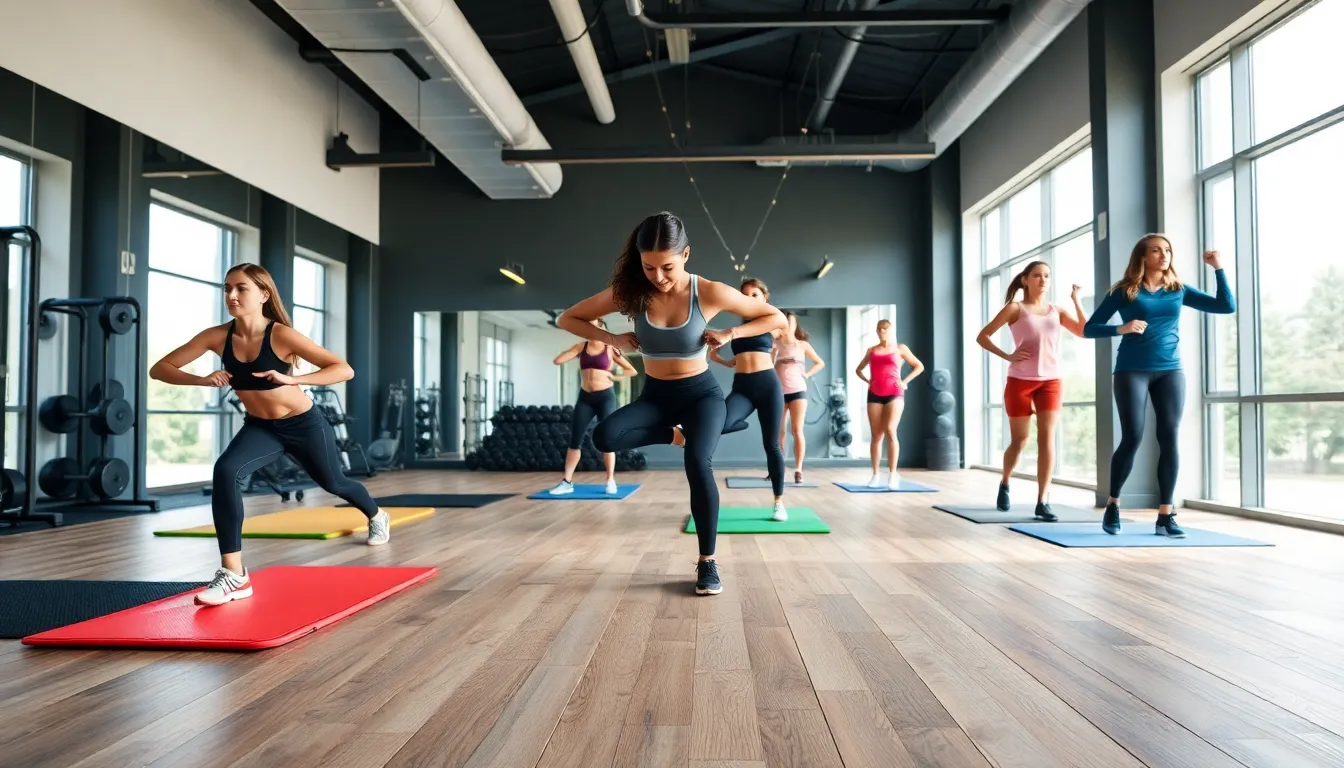Picture this: your home gym is a sanctuary of sweat, strength, and maybe a little too much ambition. The last thing you want is to tiptoe around on a surface that feels like a medieval torture device. Choosing the right flooring is crucial, and contrary to popular belief, it’s not just about looking good, though that certainly helps. Whether you’re crushing weights, pilates-ing in the corner, or chasing after your toddler using your yoga mat as a safety net, the right flooring will cushion your steps and support your hustle.
Table of Contents
ToggleImportance Of Choosing The Right Flooring

Selecting the right flooring for a home gym goes beyond aesthetics. It affects performance, comfort, and even your safety while working out. Imagine slipping on a slick surface mid-burpee, it’s not pretty, and it’s certainly not safe. A sound decision can also minimize noise, making those late-night workouts less intrusive to family members or neighbors. Besides, specific types of flooring provide extra cushioning for joints, reducing the risk of injury. In short, choosing suitable flooring is like assembling a great team: it supports you in every move you make.
Types Of Home Gym Flooring
When it comes to home gym flooring, options abound. Each type of flooring carries its own set of unique benefits and potential drawbacks. Here’s a breakdown of the most popular choices:
1. Rubber Flooring
Rubber flooring is a favorite among fitness enthusiasts for good reason. It’s incredibly durable and provides essential shock absorption, which can help protect your joints from the impact of jumps and weight training. Plus, it’s easy to clean, perfect for those post-workout sweat sessions.
2. Foam Tiles
Foam tiles are another popular selection, especially for those who enjoy a softer surface beneath their feet. Available in various colors and designs, these tiles offer excellent cushioning and can be easily installed in interlocking pieces. They’re especially useful for yoga or stretching areas and can easily be replaced if damaged.
3. Carpet Tiles
For those who want a cozy feel, carpet tiles present a viable option. They provide warmth and traction, which can make the workout space more inviting. But, keep in mind that they can trap odors and may require more maintenance than harder surfaces. Also, selecting low-pile carpets can help minimize these concerns.
4. Vinyl Flooring
Vinyl flooring combines aesthetics with functionality. It’s water-resistant, easy to clean, and available in various designs that can mimic wood or stone. This option is ideal for a multi-purpose gym that doubles as a living space. Just ensure you select thicker vinyl for better durability during intense workouts.
5. Hardwood Flooring
Providing a classic and elegant look, hardwood flooring can elevate the appearance of any home gym. It’s sturdy and easy to clean but might lack some cushioning. If opting for hardwood, consider using an area rug in your workout zone to add some support during exercises and to prevent slipping.
Factors To Consider When Selecting Flooring
Choosing the right flooring involves careful consideration. Here are several key factors to keep in mind:
1. Durability
The flooring must withstand frequent activity. Think about the intensity of workouts, heavy weights or high-speed cardio can wear surfaces down quickly. Select materials known for their longevity.
2. Shock Absorption
This isn’t just a fancy term, appropriate shock absorption can dramatically affect joint health over time. Flooring that cushions impacts is vital, especially for high-impact exercises.
3. Ease Of Maintenance
Ease of cleaning varies by flooring type. From spills to sweat, a floor that can be easily wiped down will save time and ensure a hygienic workout space.
4. Aesthetic Appeal
Let’s face it: you want a space that inspires. A well-decorated gym might motivate one to work out more often. Choose a style and color scheme that aligns with the home’s overall aesthetic.
5. Cost Considerations
Budget constraints can limit options. It’s wise to balance cost against quality. Sometimes, investing a bit more upfront can save money on replacements down the line.
Tips For Installing Home Gym Flooring
Installing home gym flooring might seem daunting, but with a few tips, it can be manageable:
- Measure Twice: Always have accurate measurements of the space to avoid purchasing excess material or running short.
- Acclimate Materials: Allow your flooring materials to acclimate to the room temperature before installation. This helps reduce the risk of warping or buckling.
- Follow Instructions: Whether you’re laying tiles, sheets, or planks, follow the manufacturer’s instructions for installation. Ensure the subfloor is clean and dry to achieve the best results.
- Add a Moisture Barrier: If placing flooring over concrete, consider adding a moisture barrier to prevent damage from rising water.
- Finish Edges: Use trim or corner pieces to finish off the edges for a polished look and to avoid wear.



